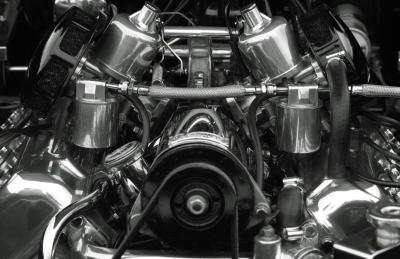
The Ford 427 c.i.d. FE block is the engine introduced in 1963 as a race-only machine, but Ford could not reasonably mass-produce it. Ford then introduced the 428 Cobra-Jet, a more affordable engine to manufacture. The 427 is among Ford's most highly desired engines, and genuine originals fetch high prices. Identifying a 427 requires thoroughness; the process involves identifying the casting number and measuring both the cylinder bore and piston stroke.
Find the Ford casting number located toward the front of the block on the passenger side. The number will have between eight and 10 digits---for example, C5AE-6015-A.
Decode the casting number. According to Classic Mustang, the first letter represents the decade manufactured ("C" for the 1960s, "D" for the 1970s, "E" for the 1980s). The second digit represents the year of the decade, followed by digits for the model car designation and part source. The number 6015 is Ford's engine block part designation, followed by a suffix letter change designation. The casting code C5AE-6015-A designates an engine block manufactured in 1965 for a Ford Galaxie.
Measure the bore of the cylinder using either a fine measurement ruler or dial bore gauge. According to Mustang and Fords, the 427 c.i.d. had the maximum bore allowable on an FE block, measuring 4.23 inches. The FE series engine block did not allow for further boring without compromising the block's integrity. Measure the cylinder bore radius with the ruler, or use the dial bore gauge to measure the bore thoroughly.
Measure the stroke using a fine measurement ruler if the pistons remain in the block. When a piston is at dead-bottom, measure it to the top of the cylinder wall. According to MRE-Books, the stroke on a 427 c.i.d. measures 3.78 inches.